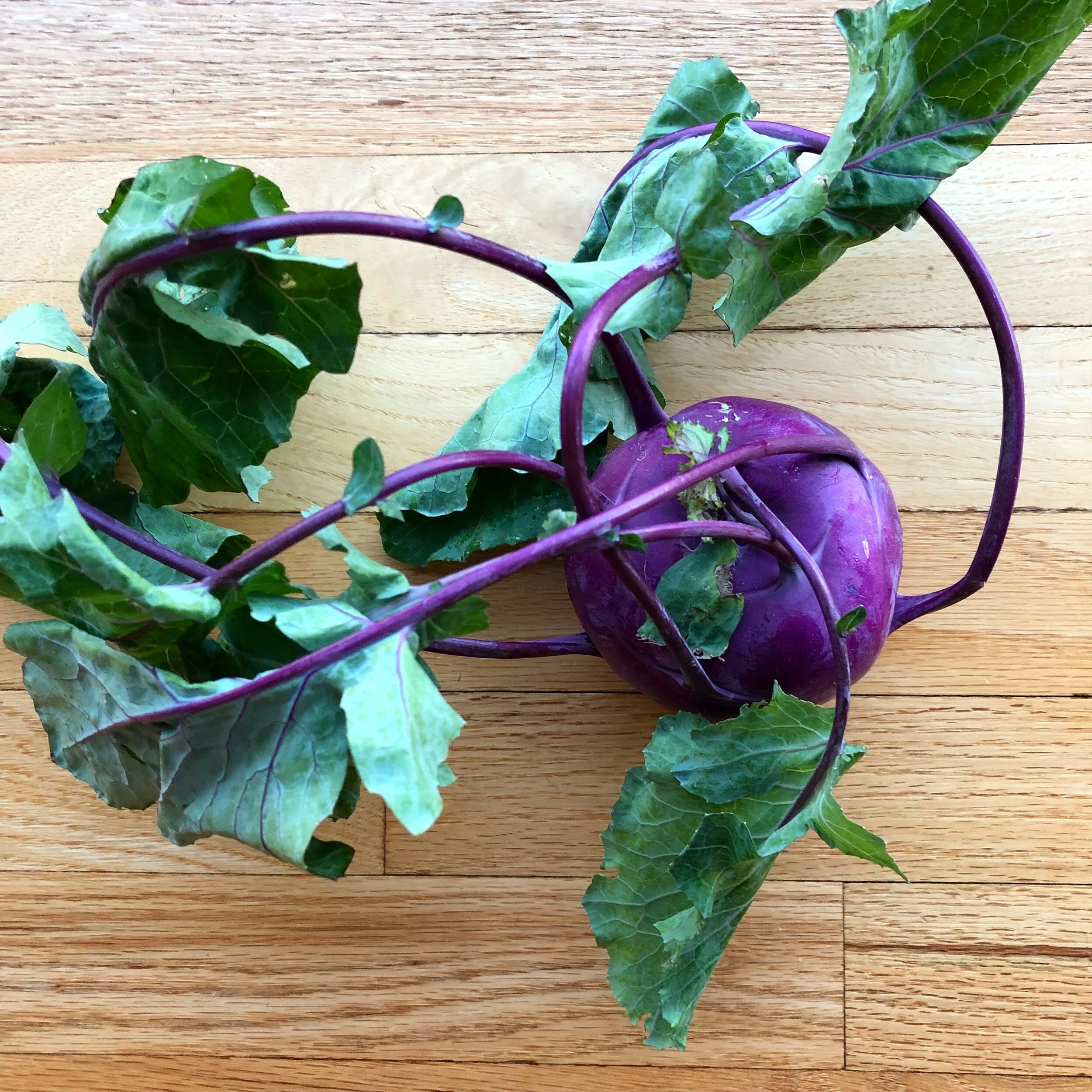Kohlrabi from Windflower Farm
Are you confused by kohlrabi? I certainly was when I first met this brassica from outer space. What is this thing? Why have I never had one before? And how do I prepare it? If you’ve recently joined a CSA [Community Supported Agriculture] or started sourcing more of your produce directly from farmers, you might also be puzzled by this prickly bulb. And it’s possibly piling up in your produce drawer as well.
Often mistaken for a root, kohlrabi is actually a super stem in the brassica (cabbage, cauliflower, broccoli, kale) family of vegetables. The stem grows into a bulb shape just about the ground.
Why are we only introduced to kohlrabi through our CSAs? Kohlrabi is a hearty, easy and quick to grow plant, so it’s a reliable one for farmers promising us their yields. Kohlrabi grows well in cooler temperatures giving us both spring and fall harvests. Because of its fast growth, it puts limited stress on soil, making it a great rotation crop. With the leaves and thin stems removed, kohlrabi can store in a root cellar or fridge drawer for months.
Okay, enough about what it is. Now tell me what to do with it! Because kohlrabi is in the cabbage family but is also similar to a salad turnip, it’s extremely versatile and has many preparations, both raw and cooked.
Here’s a quick list of ideas for your bounty of bulbs, concluding with my recipe for Kohlrabi Latkes that will have you looking for kohlrabi at the grocery store (good luck with that).
Slaw: shred kohlrabi with carrots, apples, beets, and dress in an apple cider honey vinaigrette. I like adding a few pinches of cayenne to mine.
Roasted: peel and cut into large chunks, dress with olive oil and spices and roast like you would broccoli or cauliflower. Even better when you add grated parmesan cheese as a finishing touch.
Kohlrabi fries: peel and slice into batonnets (2-3 inch long rectangular sticks), coat liberally with oil and salt and pepper, and other spices if you like. Bake or air fry at 425 degrees until crisp.
Crudité: peel and slice into sticks for dipping into your favorite dip or a mixture of lime zest, lime juice and chili powder like you would use on jicama.
Pickle: Peel, thinly slice and stick into pickling liquid for a snack, sandwich or salad topper.
Base of a bolognese or ragu: I do this with any extraneous, mildly flavored vegetables and scraps (celery stacks, carrots, broccoli and kale stems, etc.). Pulverize in a food processor until crumbled into tiny pebble-like pieces. Sauté with the onions, garlic, and any other vegetables in olive oil, and use as the base of a bolognese, pizza sauce or ragu. Once softened, add your tomatoes and other ingredients.
Use in place of cabbage in this classic Braised Sausage and Cabbage recipe from the NY Times or in Helen Rosner’s instafamous Roast Chicken with Schmaltzy Cabbage (made into a recipe by Deb Perelman at Smitten Kitchen).
Fritters and latkes: Peel and then shred kohlrabi, combine or not with a whole range of other seasonal vegetables, bind with egg and flour or potato starch and fry in oil. If you don’t feel confident just throwing a bunch of things together and frying them, here’s a recipe you can follow [or tweak].
Kohlrabi Latkes
If you can shred it, you can transform it into a latke or vegetable fritter. That’s my motto. Really, it isn’t, but perhaps it should be, right after, “if you can purée it, you can add it to pasta dough”. Kohlrabi Latkes are a crispy, salty, party food way to get your CSA vegetable on. Serve them up with any sauce of your choice. Mine are paired with a super simple Tangy Garlic Scape and Herb Yogurt Sauce, but equally satisfying are hot sauce, whipped avocado, tzaziki, and tomato chutney. Let’s face it, latkes require some effort, so stick to a minimal fuss or already prepared sauce.
Yield: 12-15 latkes, serves 6
What You Need:
For the latkes:
2 medium kohlrabi
2 medium russet potatoes
2 spring onions, bulb only or 1 small white onion
¾ teaspoon kosher salt
1 teaspoon smoked paprika
½ teaspoon garlic powder
½ teaspoon freshly cracked black pepper
2 eggs
½ cup all purpose flour or potato starch
½ - ¾ cup canola or grapeseed oil for frying
For the Tangy Garlic Scape and Herb Sauce:
3-4 garlic scapes, ends removed and roughly chopped
1 bunch fresh parsley leaves, about 1 cup
leaves from 3-4 sprigs thyme, about ¼ cup
½ cup plain yogurt
¼ teaspoon sea salt
freshly ground black pepper to taste
What You Do:
Or you can jump to the text only version of the recipe here.
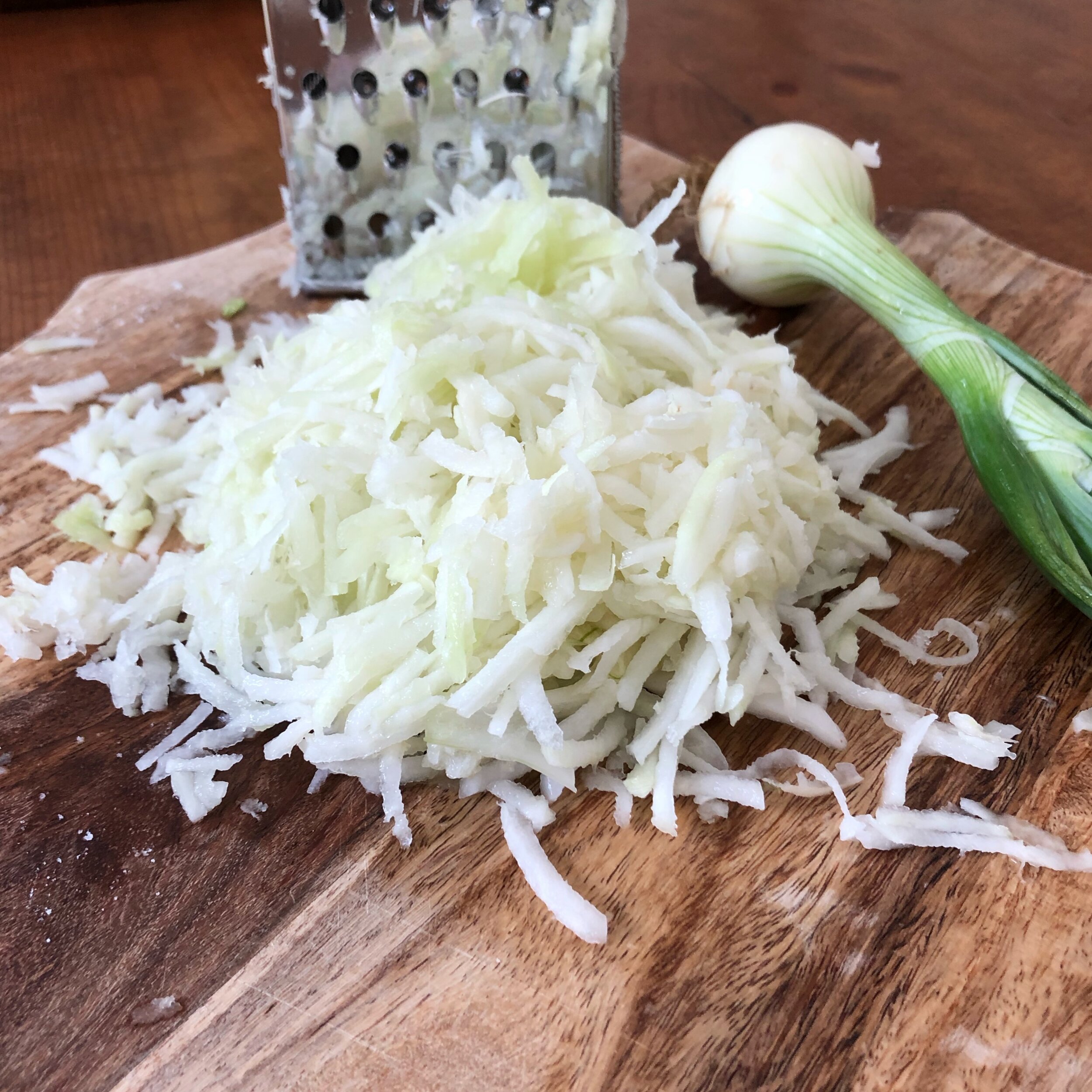
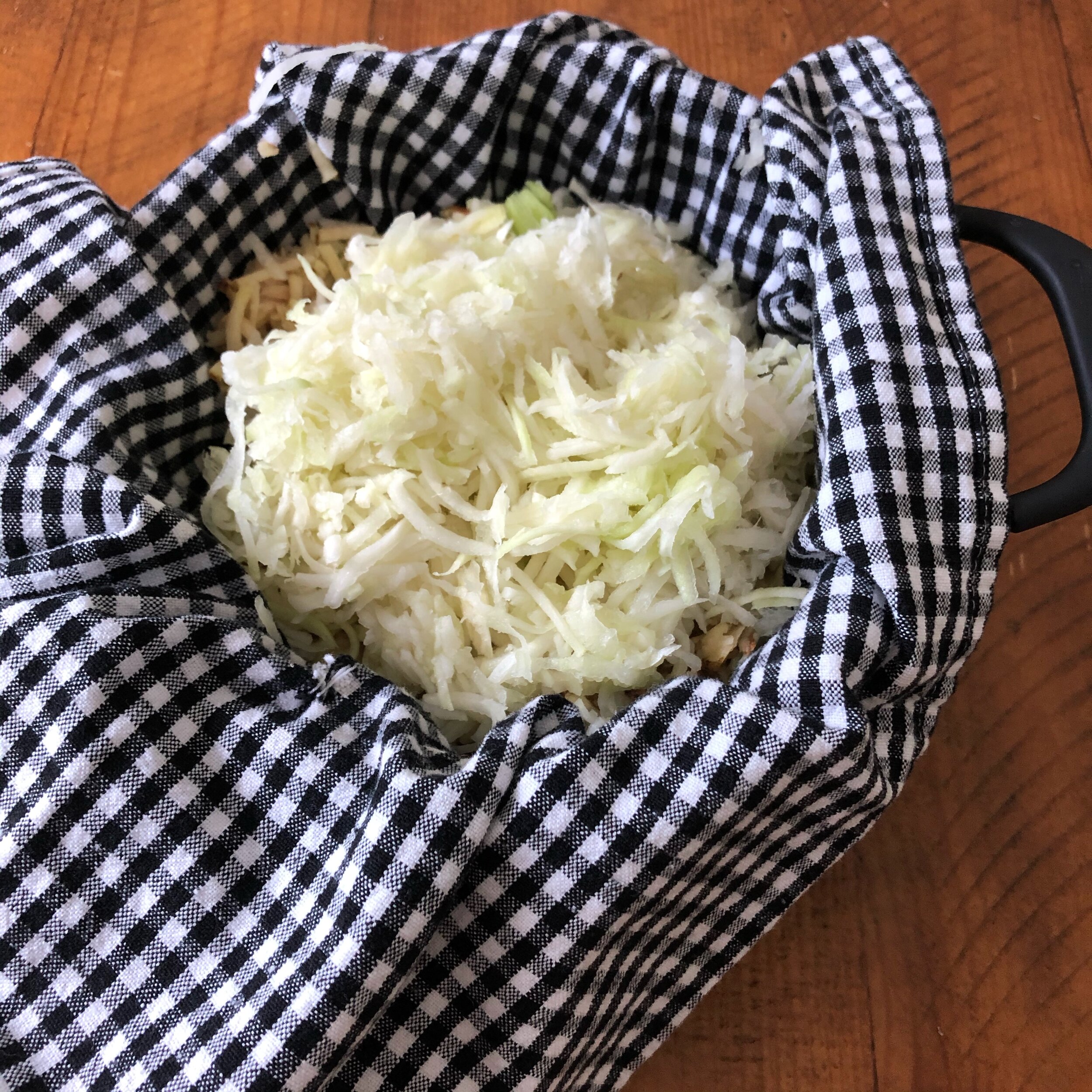
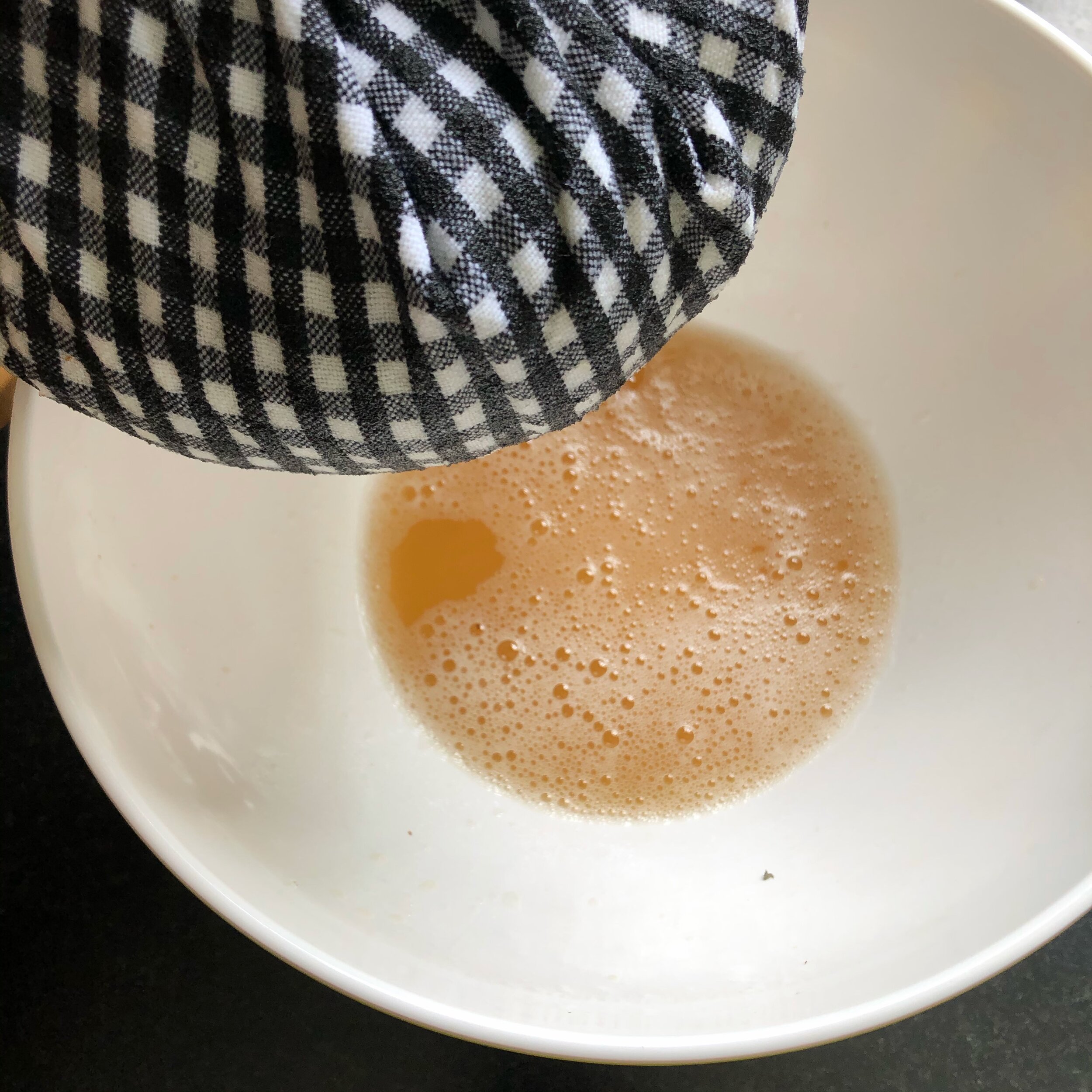
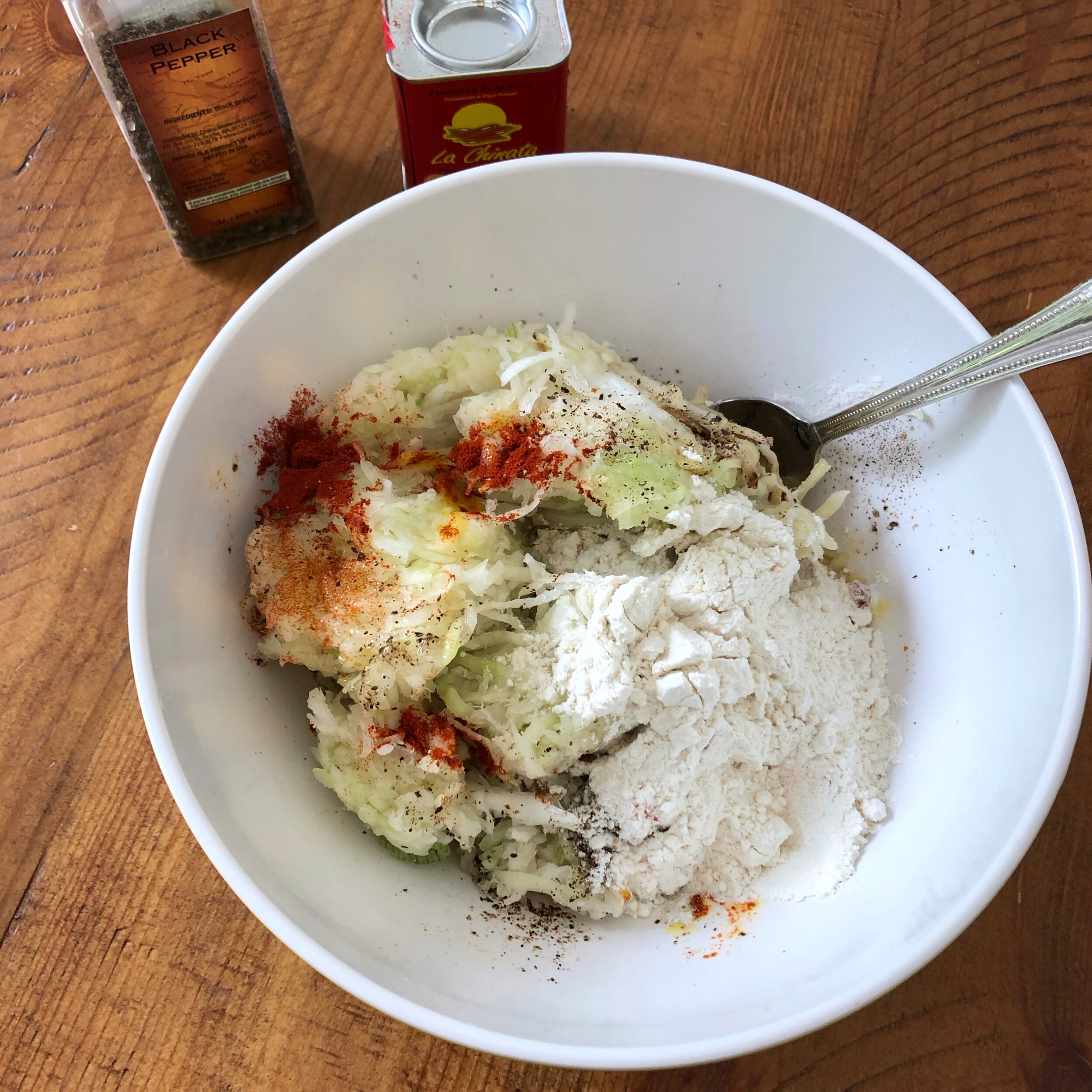

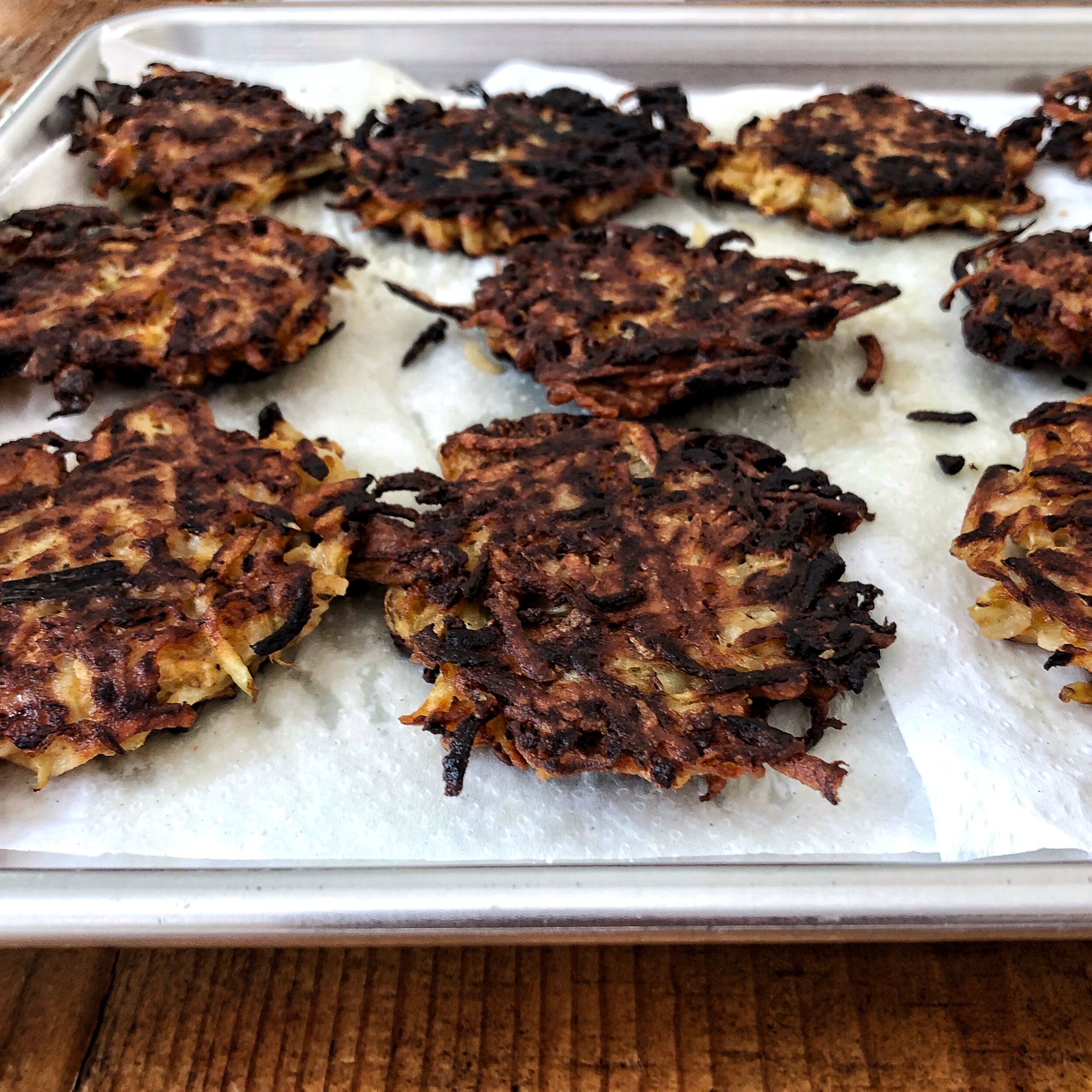
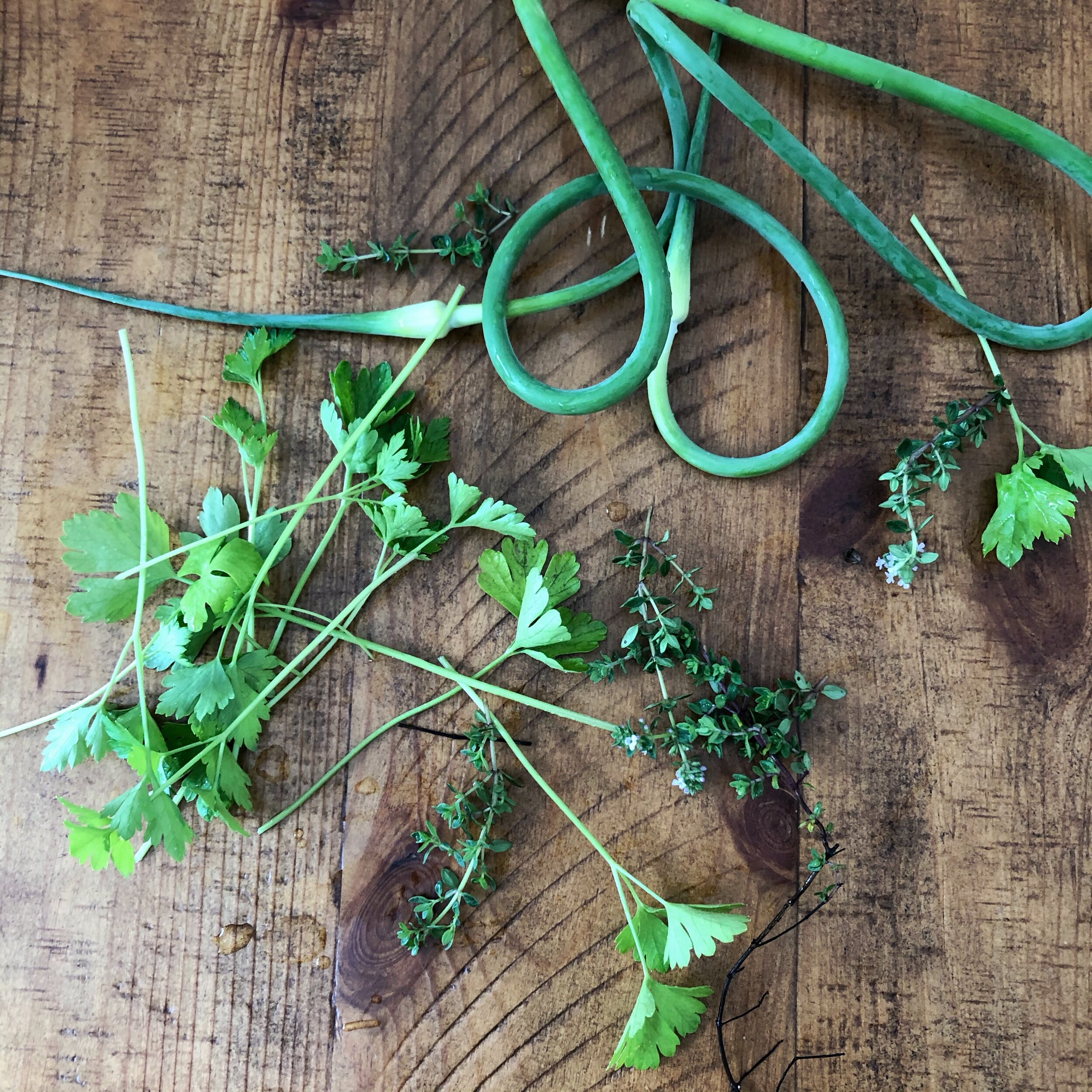
Tips for crispy latkes:
Remove as much water as possible by salting, draining and squeezing the water from the vegetables.
Use hot oil. Test the oil by dropping a few vegetable shreds into the oil. It should bubble up immediately.
Remove from oil with a slotted spatula and set on paper towel lined wire racks.
Reheat in the toaster oven or oven at 425 degrees for just a few minutes. Do not reheat in the microwave!
